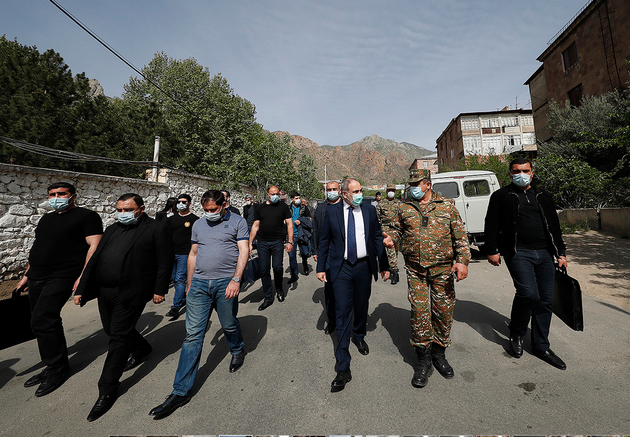Who benefits from destabilization in southern Armenia
Read on the website Vestnik Kavkaza
The political situation in Armenia stays tense. Protests in Yerevan have been replaced by election campaigns of previous and current elites. Today Nikol Pashinyan’s opponents try to undermine his election campaign by force of spontaneous walkouts in various regions of Armenia.
The most restless region is Syunik Province where Pashinyan’s cortege got the bird in the town of Agarak. As a result, the head of the government canceled scheduled visits to Meghri and Kajaran. Syunik unexpectedly became a region where all dissatisfied with the current authorities came to. It used to be one of the least political provinces situated in mountains and having the only single-option highway M2. Today it is a stage for discredit of the trilateral Statement on Karabakh on November 9th which includes lifting of a transport blockade and establishment of new transport corridors. Protests in southern Armenia are initiated by those who stand against new infrastructural projects as Pashinyan's opponents see this clause of the Statement as the most vulnerable position in the authorities’ policy and try to profit from the topic of national security.
In fact, Pashinyan’s opponents foster an illusion of an anti-governmental attitude in Syunik Province because security of Armenian borders is provided by the CSTO while lifting of the transport blockade, including railways, is controlled by the Russian Railways. Economically, Syunik is a monopolistic affected area of Iranian assets as eastern and western borders of the province are blocked while the road connecting Syunik with other provinces of the republic runs through the arduous Vorotan Pass. Real problems of Syunik were mainly caused by the transport blockade because of which the province had no outlets for local goods. The internal market is far away from the province. Thus, it is hard to export finished products because of expensive transportation. So, the locals are oriented to Iran.
However, such problems are beyond the political agenda of the opposition. The geographical location of the province and the border blockade (and corresponding emotional atmosphere) allow them to establish a wide anti-governmental front in the region and hope that Pashinyan’s election campaign will get stuck in Syunik.
Pashinyan is a guarantor of committing the Statement on Karabakh. However, he also wants to show Russia that is it impossible to restore the transport corridor in southern Armenia. Yerevan’s policy is focused on postponement of implementation of the agreement till favored times or moving implementation of the project to the north of Syunik with an option to extend the transit through the republic’s territory. To achieve the goal, the Armenian government is forming a political line, according to which both Armenia and Russia will benefit more from de-blockade of all other routes built in Soviet times. Such a step is beneficial primarily for Armenia as it enables free connection with Russia and Iran. In this case, the restless situation in southern Armenia is favorable to Pashinyan because it should convince the Russian authorities that de-blockade of the single-option 45-km long railway route through Meghri is senseless as it is not connected to other operating transport communications of Armenia.
An alternative to restless Syunik is reconstruction of Ijevan-Gazakh highway which connects Armenia and Azerbaijan and Turkey and Azerbaijan through the Armenian territory.